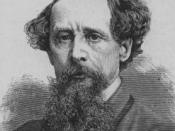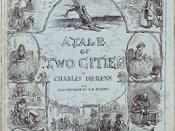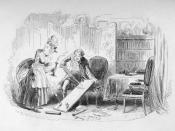Knitting and wine are elementary symbols to understanding A Tale of Two Cities. Dickens collectively foreshadows the future of the French Revolution with intriguing themes: Madame Defarge's carefully selected list of condemned aristocrats to die in the revolution and the streets smeared with wine that are soon to be smeared with blood. Both of these themes create an atmosphere of darkness and apprehension that entails the lower class's uprising against the wealthy. Having no definite victor between the classes the classes is significant in the story, as Dickens contrasts the changes each class makes: either for "the best of times", or for "the worst of times".
Madame Defarge, the Vengeance and the mob seek revenge for the numerous sufferings caused by the hands of the French aristocracy. Even though they want to promote happiness and peace, ironically, they instead produce more violence and oppression. Not realizing that their undeniable violence towards the nobles was the same as what the nobles had done to them show how the peasants turn out to be as appalling as the nobles.
This is significant to the story because it shows the contradictory attitudes of the French Revolution in which Dickens compares "the best of times" and "the worst of times". In the peasant's situation, the best times was represented by their determination to end the noble's indifferent and snobbish attitude. The peasant's revolt, combining violence and cruelty, contributes to "the worst of times".
In the story, Dickens describes the scene in detail of how desperate and hungry the French peasants were. Peasants licking up spilt wine off the street suggests that they will do anything to save as much wine as they can for themselves. The wine not only depicts the rampant hunger of the peasants, but also symbolizes their bloodlust...


